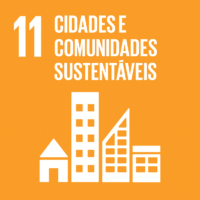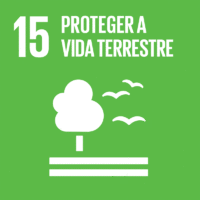Ciência_Iscte
Comunicações
Descrição Detalhada da Comunicação
Mapping Biophilic Urban Structures for Lisbon
Título Evento
WORKSHOP Dinâmicas Socioeconómicas e Territoriais Contemporâneas VI
Ano (publicação definitiva)
2022
Língua
Inglês
País
Portugal
Mais Informação
Web of Science®
Esta publicação não está indexada na Web of Science®
Scopus
Esta publicação não está indexada na Scopus
Google Scholar
Esta publicação não está indexada no Overton
Abstract/Resumo
This presentation exposes the main goals and the programmatical agenda of a PhD research that is being developed at the Doutoramento em Arquitectura dos Territórios Metropolitanos Contemporâneos, financed by the Portuguese Science Foundation, with the title Biophilic Urban Structures: An application in Lisbon.
This research fits into the objectives 11 and 13 of the 2030 agenda of the United Nations and takes the municipality of Lisbon (European Green Capital 2020) as its case study. The main objective of this research is to evaluate the efficiency of its vegetation. The biophilic urbanism model supported by the principle of biophilia emerges as an opportunity that ease humans ́ relation with nature. Therefore, biophilia is here regraded as a strategic guideline for the Lisbon assessment, in terms of its vegetation inventory and mapping. The project aims to identify and design typologies of biophilic structures to support cities to become more sustainable and resilient in the future (Beatley, 2009, 2010, 2013, 2017), taking Lisbon as a case study.
Thus, the project reflects on the importance of using adequate vegetation for the planning of biophilic cities, while favoring plant and tree characteristics that target decarbonization and have the capacity for thermal regulation and improve urban biodiversity, thus promoting more sustainable and resilient cities (Beatley and Newman, 2013). Another goal of this project is to map existing biophilic structures that are more advantageous than the large number of architectural projects using more decorative methods (Xue et al., 2019).
Enquiring if the municipality's vegetation and urbanism plan benefit the health and wellbeing of its citizens and whether this results in environmental benefits (e.g. mitigating climate change and heat islands) and economic benefits (e.g. reducing absenteeism) for civil society and the public and private sectors is therefore an important contribution of this research. The starting point is to understand: i) whether the vegetation and urbanism plan in the municipality of Lisbon fits the principles of biophilic urbanism; ii) if it is resilient and efficient; and iii) if it can be increased, improved, perfected or modified while considering the ecological and landscape characteristics of the municipality of Lisbon, and benefiting the city and its citizens. Thus, the central hypothesis of this project is the following: Biophilic urbanism is needed in Lisbon and yet the existing biophilic structure is insufficient, still lacking the potential to markedly benefit citizens, and thus falling far short of the idea defended by a large number of works that suggest a positive impact of biophilic urbanism on metropolitan spaces. In Lisbon, this is the case as there is a mismatch between the idea and its practice, as represented by the types of vegetation chosen in different spaces of the city, and improvement is required in this regard.
The methodology that will support this research will be divided into the following phases: Historical analysis of the vegetation plans of the municipality of Lisbon after 1990; observation of the Planeamento do Município de Lisboa (February 1990), Plano Estratégico de Lisboa PEL (June 1992), Plano Diretor Municipal PDM (September 1994), the current Plano de Estrutura Ecológica de Lisboa (contained in the PDM of 31 August 2012) and the principles of the Carta Estratégica (2010–2024); systematic analysis of the vegetation plans implemented in the municipality, from the point of view of their characteristics and classification, including the identification and mapping of biophilic examples currently found in the municipality of Lisbon; systematic analysis of the climate and the physiographic, ecological and morphological characteristics of the municipality of Lisbon; a literature review based on research in the areas of landscape architecture, biophilic architecture, studies on vegetation plans in metropolitan areas and studies on the properties and characteristics of different trees and plants recommended for urban use for the revention of heat islands, mitigation of climate change, reduction of CO2 levels, improvement of urban biodiversity and its application to the city of Lisbon; 20 semi-directive interviews with government actors, city council professionals in the field of the environment and green spaces, landscape architects, academics and non-governmental actors, followed by content analysis of the interview scripts, to understand their thoughts on the plan that will form the basis of this project.
The main expected result of this work is to map the biophilic structures and to build a repository of vegetation for Lisbon, which will support the creation of green infrastructure with more biophilic structures to mitigate the effects of climate change and heat islands. This project presents an opportunity to improve urban biodiversity, along with the health and wellbeing of citizens while promoting healthier and more productive urban environments that could benefit the social fabric and the public and private sectors.
Agradecimentos/Acknowledgements
--
Palavras-chave
Lisbon,biophilic urbanism,vegetation,urban metabolism
Classificação Fields of Science and Technology
- Ciências da Terra e do Ambiente - Ciências Naturais
- Outras Ciências Naturais - Ciências Naturais
- Geografia Económica e Social - Ciências Sociais
- Outras Ciências Sociais - Ciências Sociais
Contribuições para os Objetivos do Desenvolvimento Sustentável das Nações Unidas
Com o objetivo de aumentar a investigação direcionada para o cumprimento dos Objetivos do Desenvolvimento Sustentável para 2030 das Nações Unidas, é disponibilizada no Ciência_Iscte a possibilidade de associação, quando aplicável, dos artigos científicos aos Objetivos do Desenvolvimento Sustentável. Estes são os Objetivos do Desenvolvimento Sustentável identificados pelo(s) autor(es) para esta publicação. Para uma informação detalhada dos Objetivos do Desenvolvimento Sustentável, clique aqui.

 English
English




